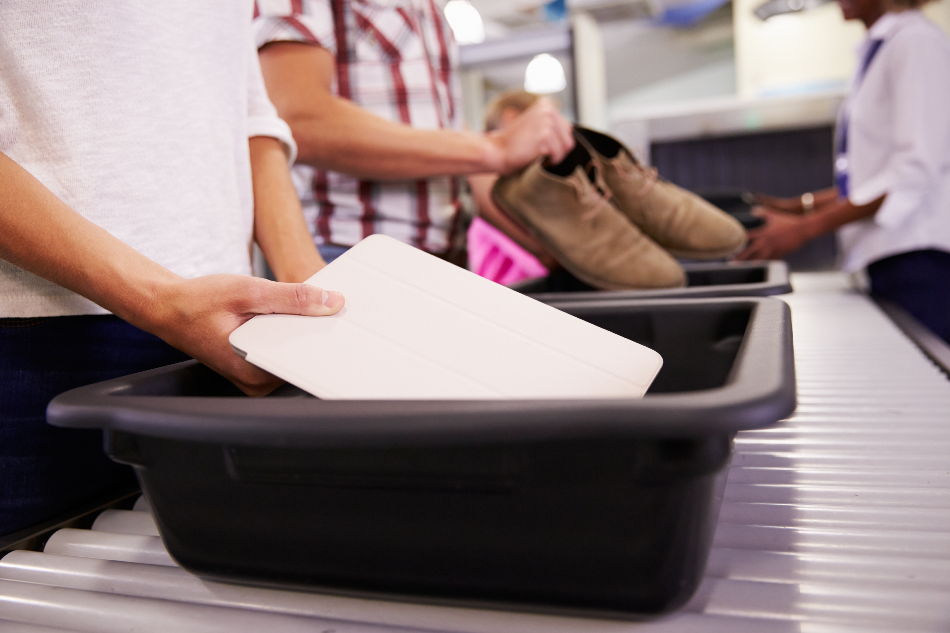The importance of advancing methods of explosive detection
Developing reliable and effective methods for the detection of explosive materials has become paramount in recent decades following high profile cases of terrorism, such as the events of 9/11. Since this time there has been a boom in interest in protecting air travel and cargo shipping from attacks using explosives.

Image Credit: Monkey Business Images/Shutterstock.com
Whereas previously, the security focus for aviation had been on the prevention of hijacking, the attacks of 9/11 shifted the focus onto preventing deliberate sabotage. This involved the development of systems that could improve the safety of air travel (and also cargo shipping) by determining the form, density, and other parameters that facilitate the detection of the material encased within a suitcase or shipment, helping authorities recognize hidden illicitly-transported explosives which have served as the main terrorist threat following 9/11, where commercial flights were threatened by a relatively limited quantity of hidden explosives.
X-ray detection systems have been used since the 1970s to carry out mandatory security checks of passengers, alongside metal detectors. These security checks were initially implemented to screen for illegal or prohibited items, fraud or revenue avoidance, and finally, terrorist threats. However, in the US pre-9/11 airlines had employed contractors to carry out these checks who were often underpaid and did not follow a strict protocol to enhance the effectiveness of their safety checks.
Since then, advancements have been made in the use of x-ray methods, enhancing their effectiveness and reliability, specifically for the detection of explosives. Below we discuss how X-ray diffraction is currently used in airport security, as well as in the security systems of other methods of transport, such as rail, and cargo shipping.
Using X-ray diffraction to detect explosives
The use of x-rays to penetrate suitcases and shipping boxes was the choice for the automation of security checks, allowing authorities to see what’s inside without having to open up the luggage/cargo. With 4.72 billion passengers predicted to fly throughout 2020, a figure that is increasing each year, the importance of automating security checks has never been more prominent.
X-ray diffraction is a nondestructive method for obtaining visuals of the chemical composition, crystallographic structure, and physical properties of materials that are enclosed within a vessel, such as a suitcase. X-ray diffraction works on the principle that the absorption of the light waves differs dependent on the properties of the object being scanned. What’s more, the x-ray light waves can penetrate through thick steel and other tough materials that may be used to ship cargo.
Original x-ray computed tomography was limited in not being able to relay information regarding the specific materials enclosed within a vessel (e.g. within a suitcase). It also was not able to highlight whether a substance was a solid or a liquid. This limited its ability to flag potentially explosive substances and required much more intervention and analysis from members of staff, which made potentially dangerous substances prone to oversight and human error.
Because of the limitations of the original x-ray computed tomography, x-ray diffraction, specifically, energy dispersive x-ray diffraction has now overtaken as the main method used for performing security checks on luggage and cargo. It is an incredibly powerful non-invasive technique that reports various information regarding the crystalline structure of samples being scanned. This allows it to detect specific materials, as well as identify between solid and liquid substances.
It works as incident x-ray beams interact with the photon matter of the sample materials. Where the beam hits the sample, an electron in an inner shell becomes excited, resulting in its ejection, creating an electron-hole in the electronic structure of the element. This hole is then filled by an electron from a higher energy shell, which expels the difference of energy between the two shells as x-rays which then contact the detector. The amount of energy released as x-rays is unique for different elements, allowing the method to provide information on the elements and substances present within the sample being scanned.
The method is now firmly established in over 45 different applications of security inspection scenarios, however, most importantly it is used in airport security. Elements and compounds used in explosives can be effectively detected automatically, with the need for minimal human intervention. Additionally, the technique can easily detect liquids due to the specific spectra produced by materials in their different forms.
The compositions of dangerous materials, such as explosives, are well known. Security systems can be programmed to recognize the spectra of illicit materials, as well as those that are unknown but suspicious. In this way, explosives can be simply detected by energy dispersive x-ray diffraction, preventing terror attacks in aviation, and other forms of transport.
Sources:
Crespy, C., Duvauchelle, P., Kaftandjian, V., Soulez, F. and Ponard, P. (2010). Energy-dispersive X-ray diffraction to identify explosive substances: Spectra analysis procedure optimization. Nuclear Instruments and Methods in Physics Research Section A: Accelerators, Spectrometers, Detectors, and Associated Equipment, 623(3), pp.1050-1060. https://hal.archives-ouvertes.fr/hal-00878519/PDF/article_Charles.pdf
Polini, A. and Yang, F. (2017). Physicochemical characterization of nanofiber composites. Nanofiber Composites for Biomedical Applications, pp.97-115. https://www.sciencedirect.com/science/article/pii/B9780081001738000053
Wells, K. and Bradley, D. (2012). A review of X-ray explosives detection techniques for checked baggage. Applied Radiation and Isotopes, 70(8), pp.1729-1746. https://www.researchgate.net/publication/225048417_A_review_of_X-ray_explosives_detection_techniques_for_checked_baggage
Zentai, G. (2008). X-ray imaging for homeland security. 2008 IEEE International Workshop on Imaging Systems and Techniques. https://ieeexplore.ieee.org/abstract/document/4659929
Disclaimer: The views expressed here are those of the author expressed in their private capacity and do not necessarily represent the views of AZoM.com Limited T/A AZoNetwork the owner and operator of this website. This disclaimer forms part of the Terms and conditions of use of this website.